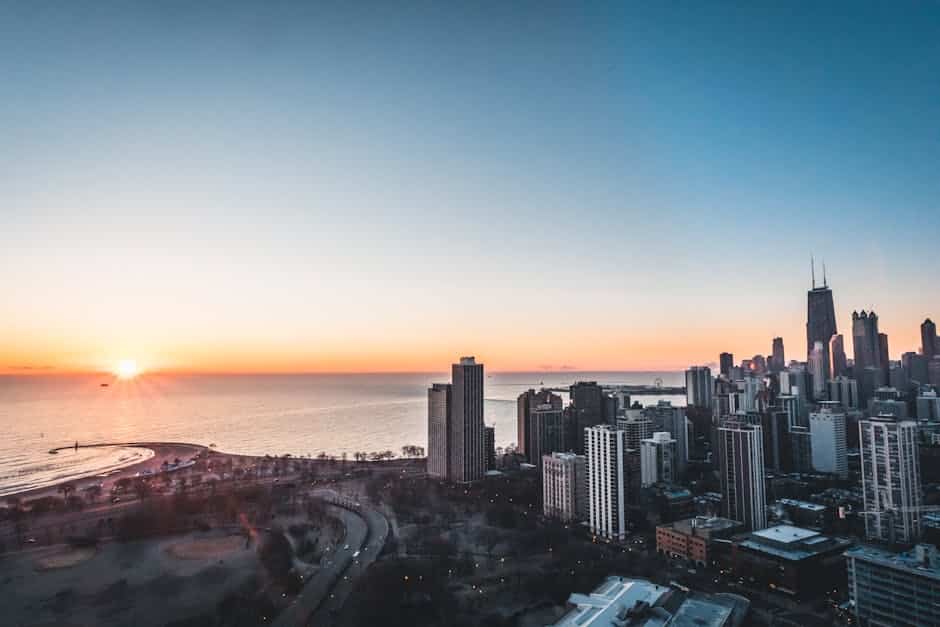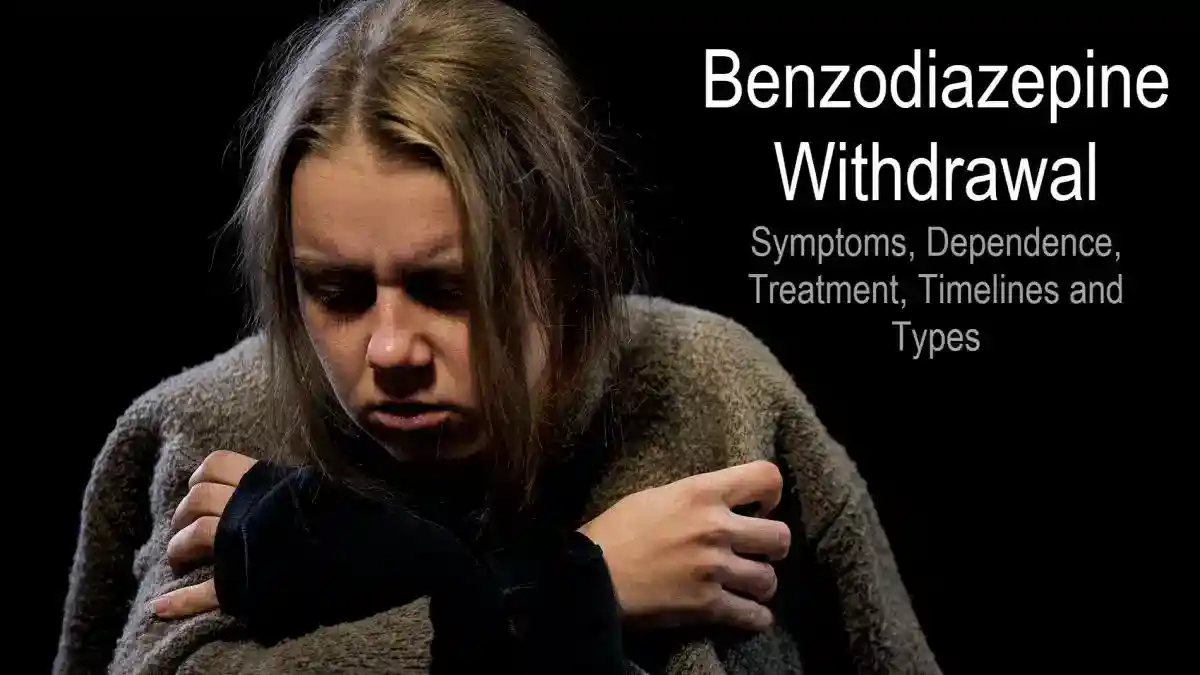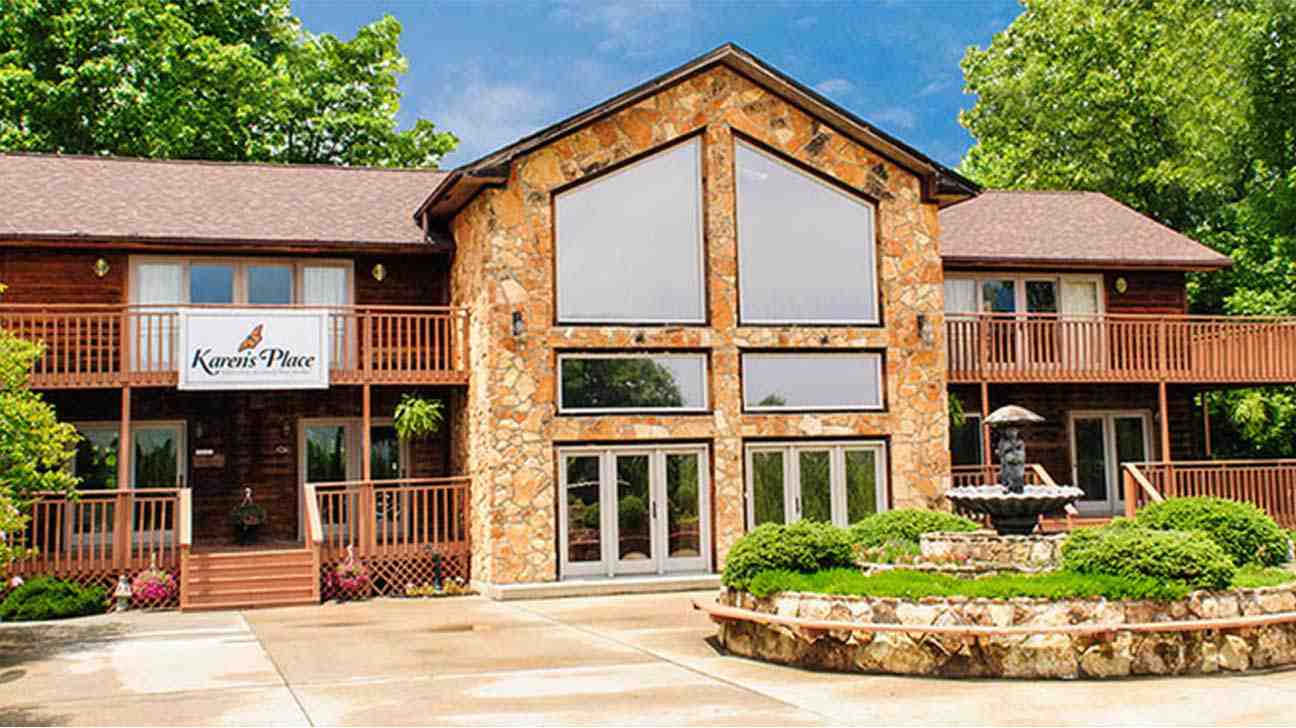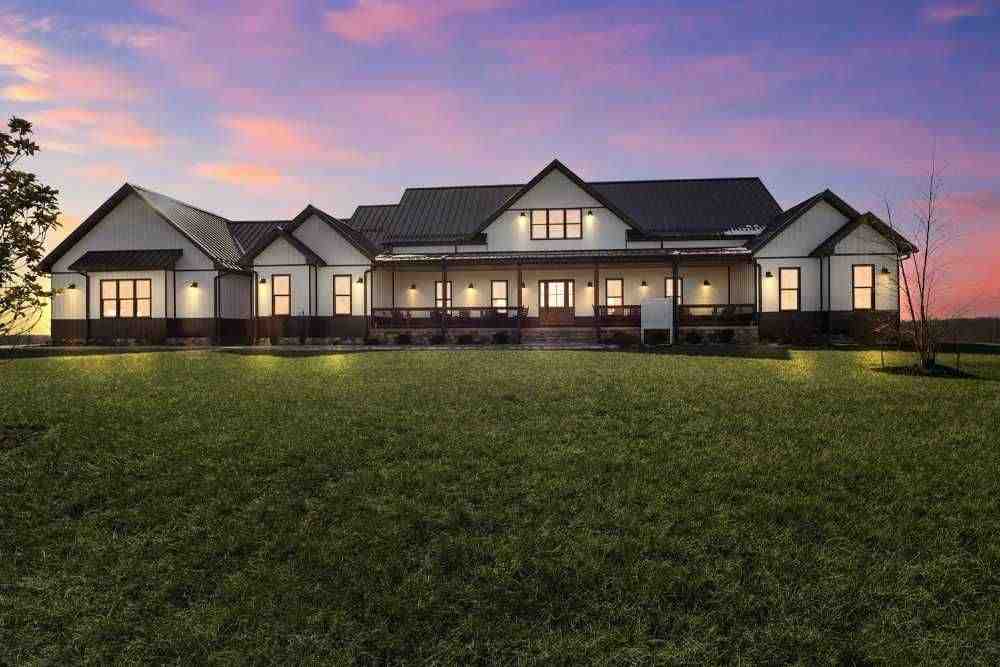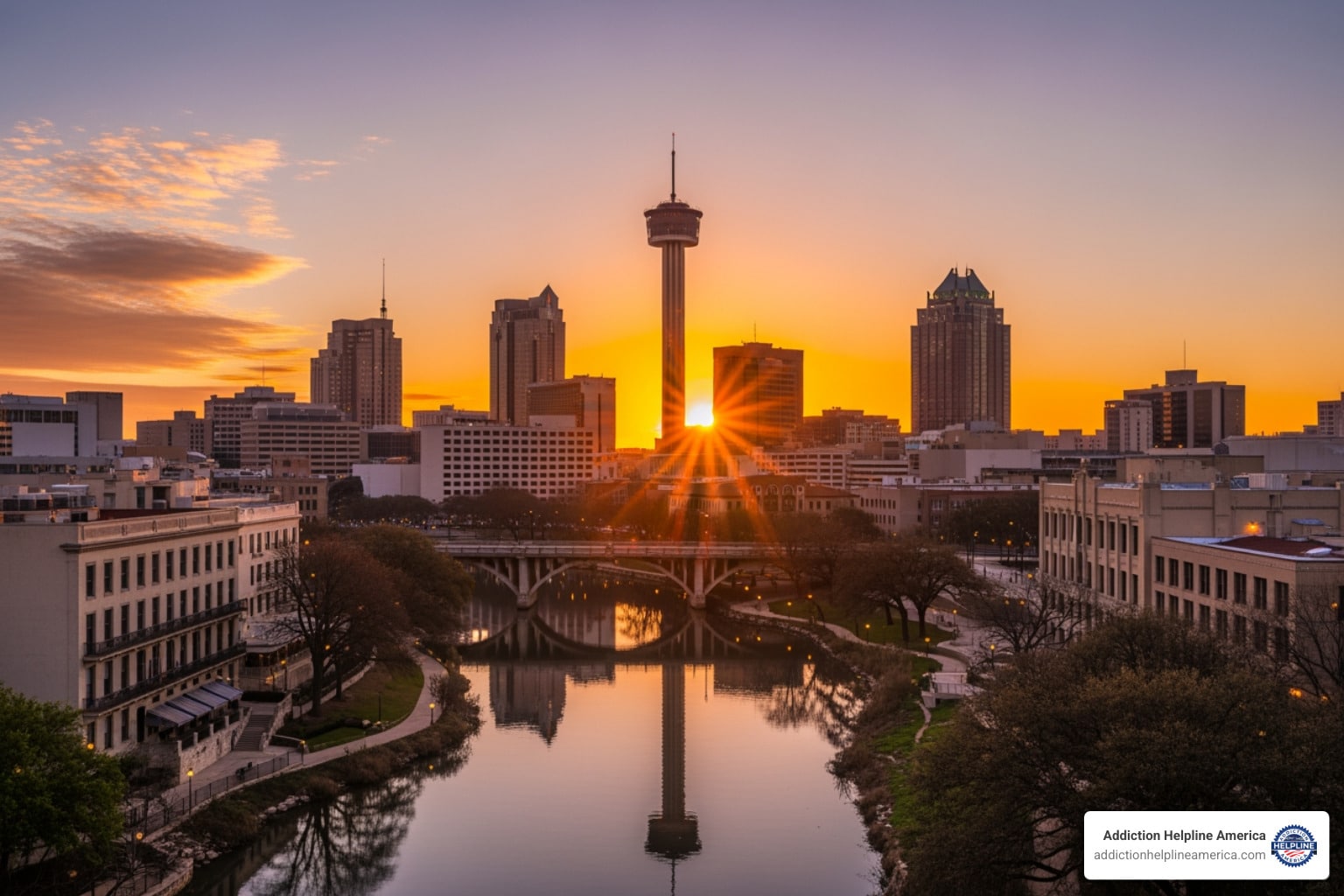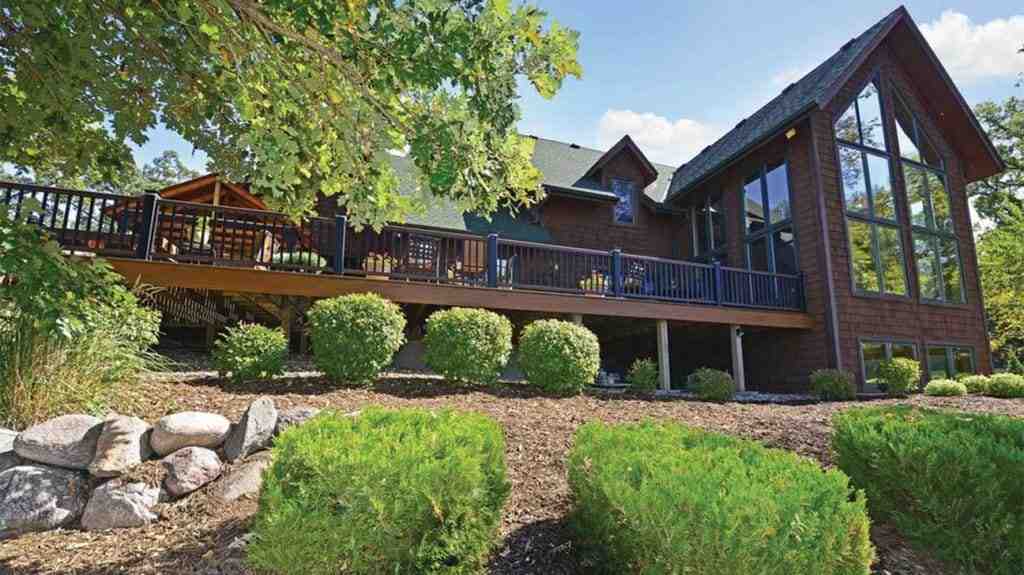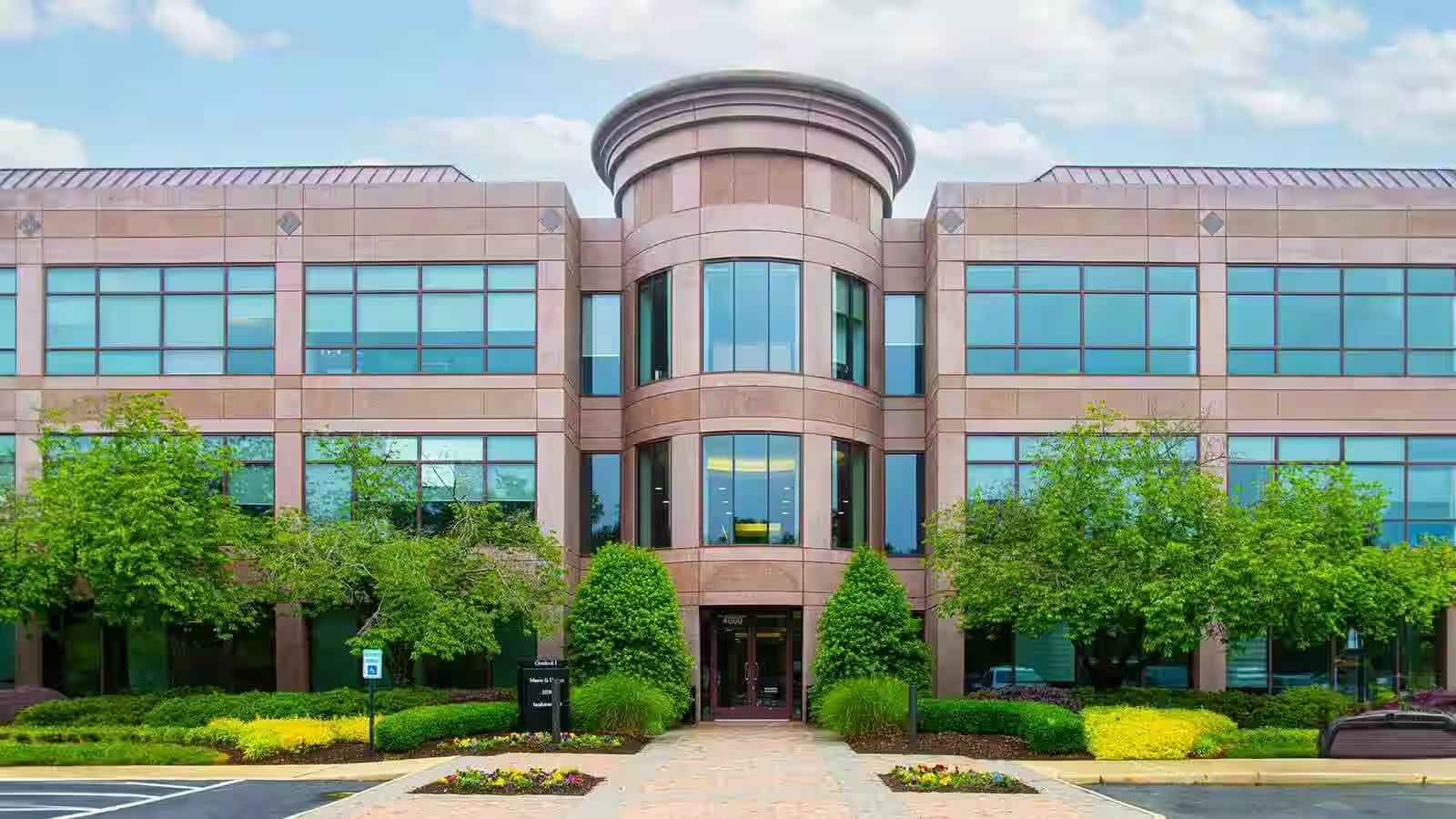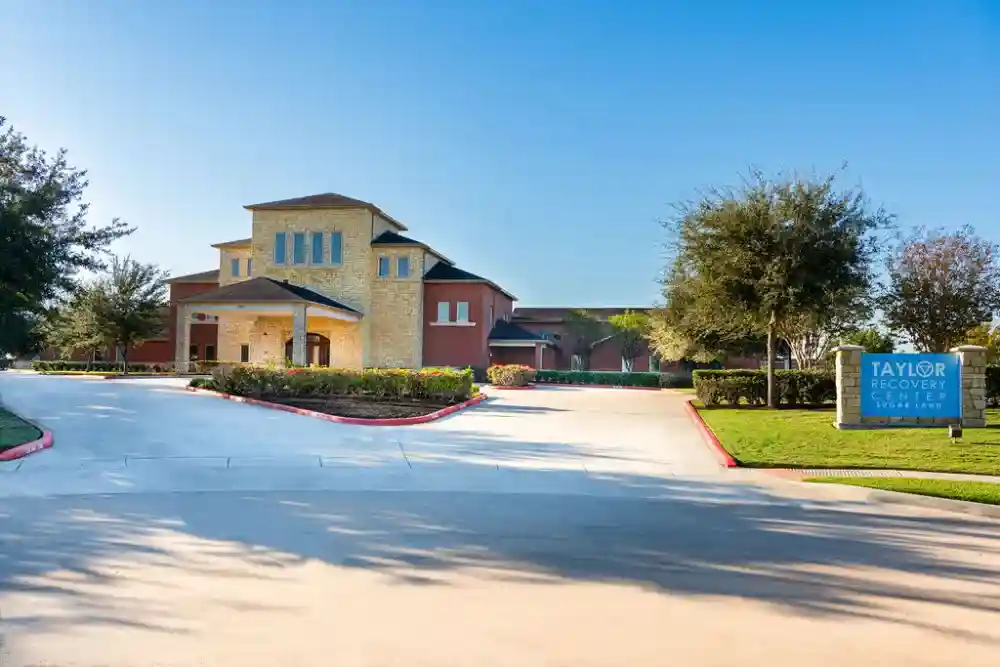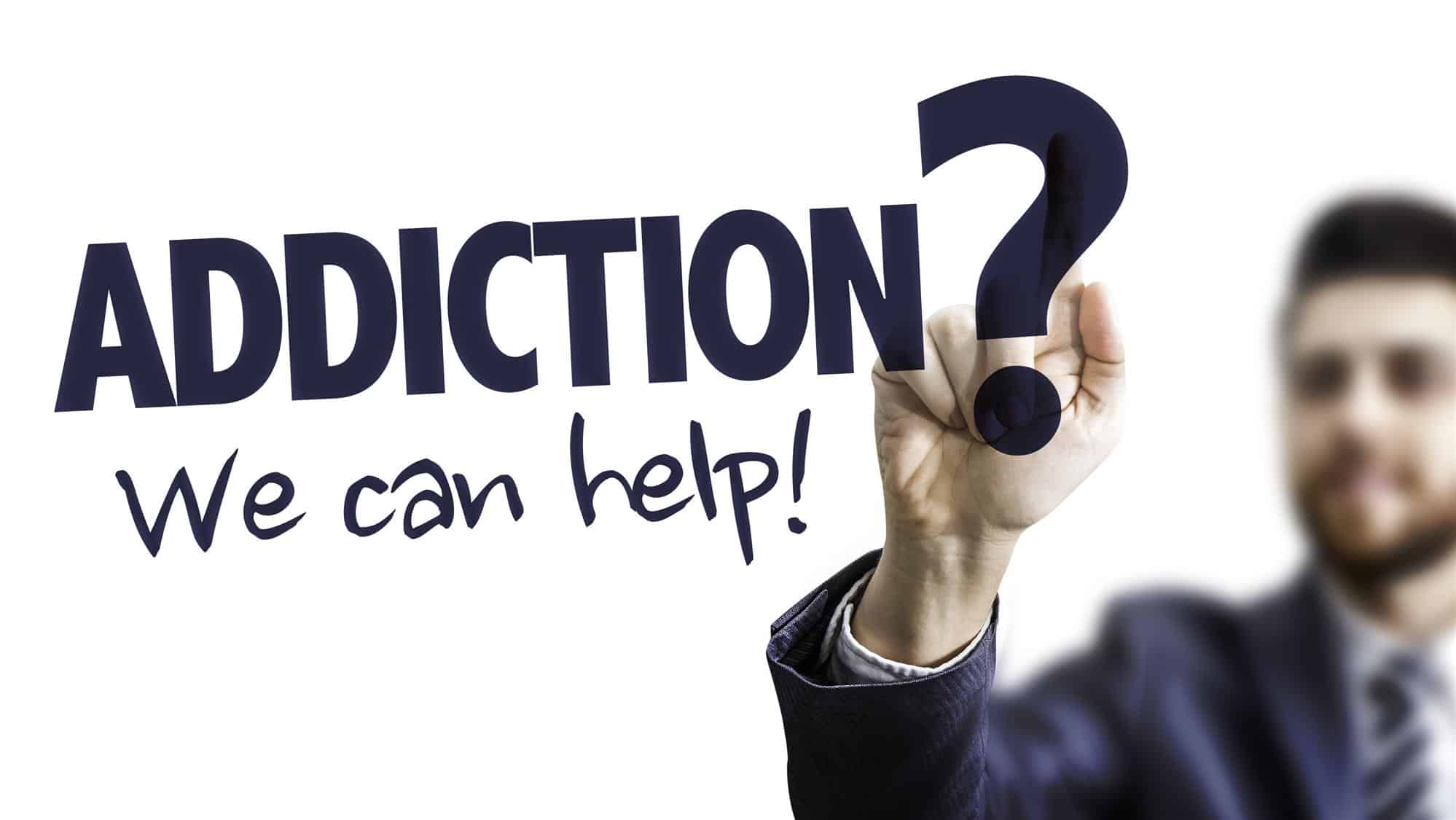
Understanding Your Path to Recovery from Substance Use Disorder
Help for drug addiction is available right now. If you or a loved one is struggling, these resources offer immediate support:
- Call or Text 988: The Suicide & Crisis Lifeline offers free, confidential support 24/7.
- SAMHSA National Helpline (1-800-662-HELP): Provides free treatment referrals and information.
- FindTreatment.gov: A confidential tool to locate treatment facilities near you.
- Get Naloxone: This medication can reverse opioid overdoses and is available at most pharmacies.
- Connect with Support Groups: Communities like Narcotics Anonymous (NA) and SMART Recovery offer free peer support.
In 2023, 48.5 million Americans had a substance use disorder. You are not alone. Addiction is a treatable medical condition, and millions of people are in recovery today. While there is no simple cure, research-based treatments help people reclaim their lives.
This guide provides clear, actionable steps for finding help. At Addiction Helpline America, our specialists connect individuals and families with the resources they need. We created this guide to make your path forward clearer.
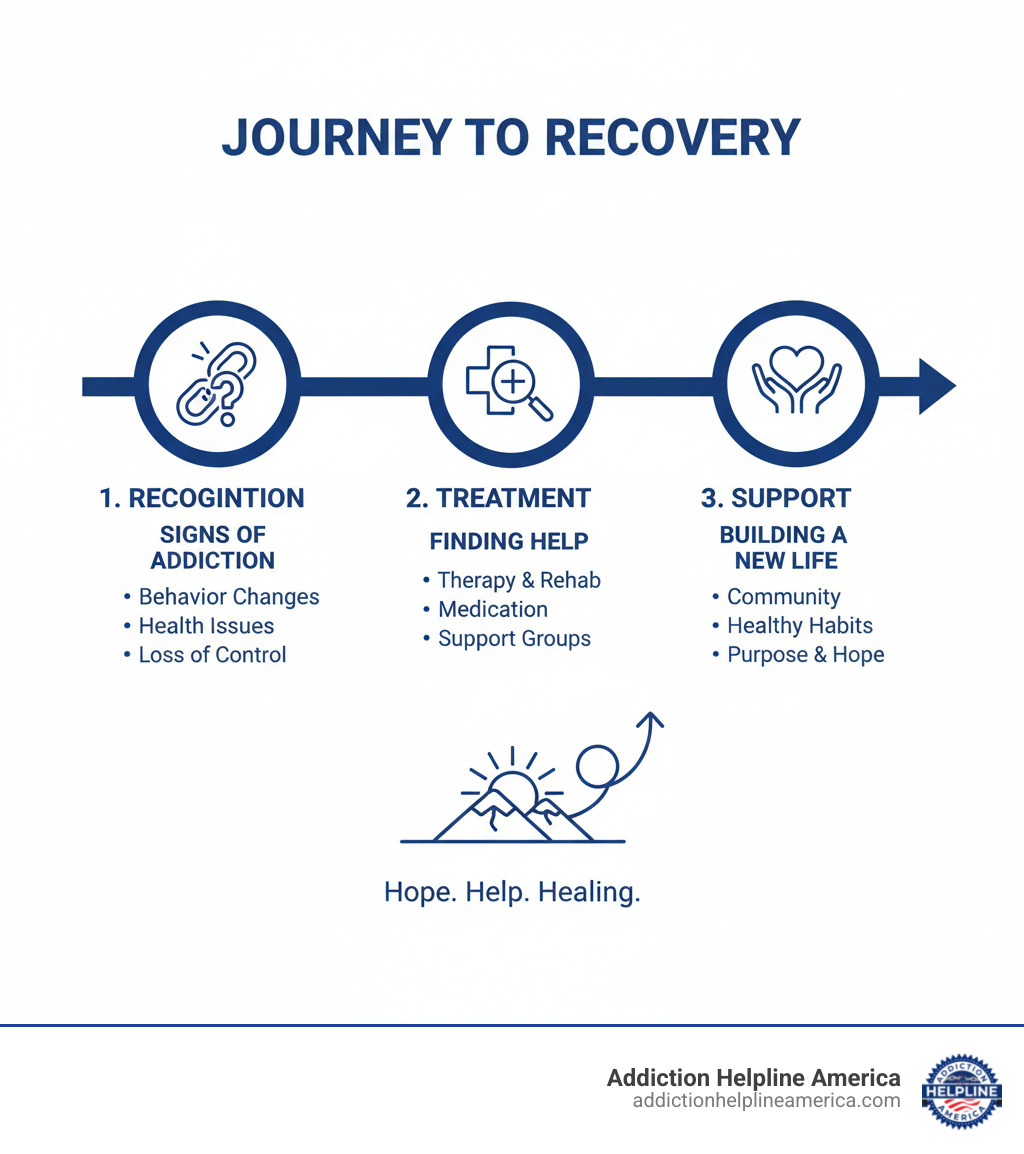
Find more about help for drug addiction:
- addiction treatment programs
- National Drug Abuse Hotline Numbers: Free Addiction Help 24/7
- inpatient addiction treatment
Recognizing the Need for Help: Signs of Drug Addiction
Addiction is not a moral failing; it’s a disease that physically changes the brain. Drugs hijack the brain’s reward system, making it difficult to feel pleasure from normal activities and impairing judgment. This is why willpower alone is often not enough. Help for drug addiction is necessary to support the brain’s healing process.
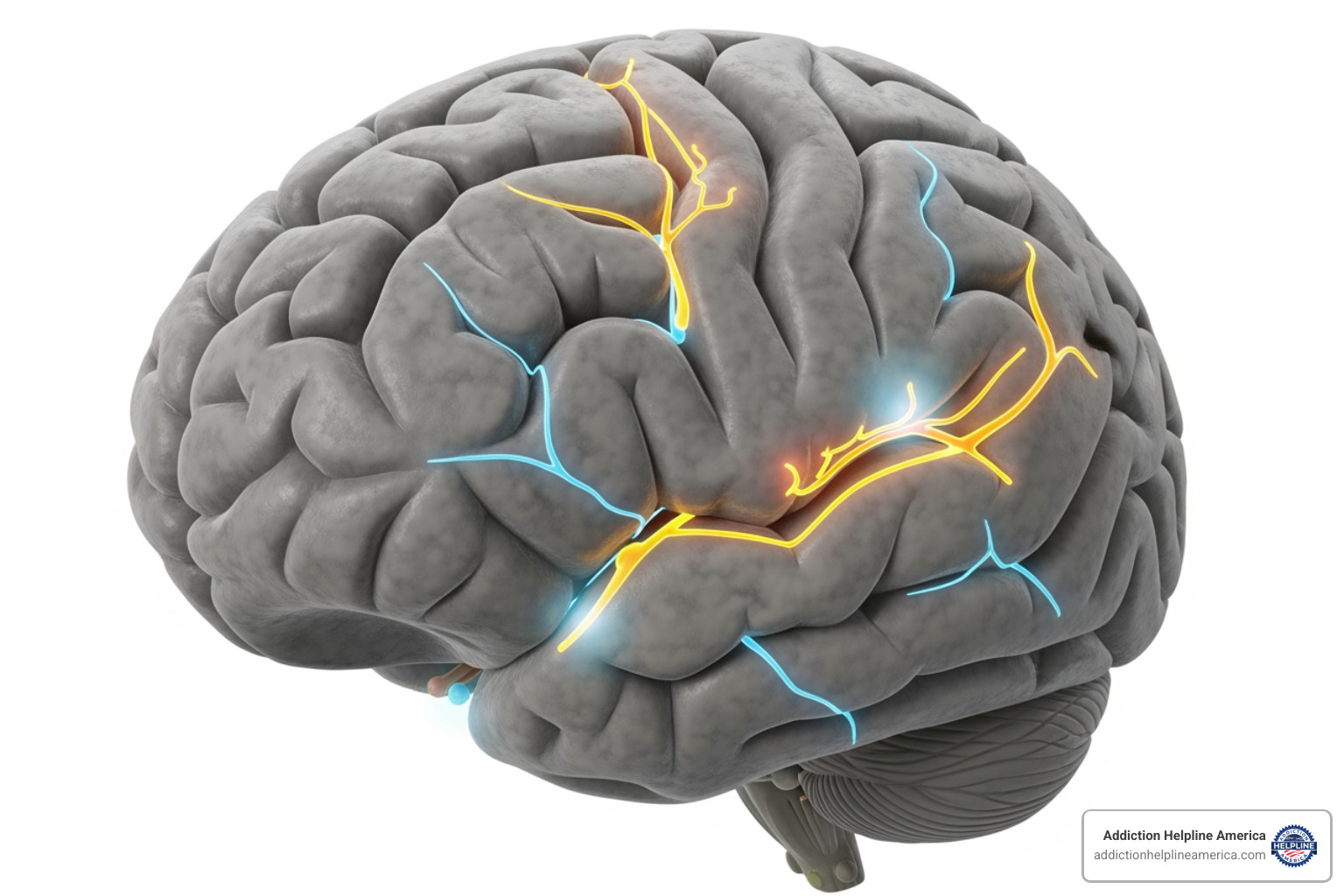
Physical dependence (experiencing withdrawal symptoms like shaking or nausea) and psychological dependence (intense cravings) work together to trap a person in addiction. Furthermore, about half of those with a substance use disorder also have a co-occurring mental health condition like depression or anxiety, which must be treated simultaneously for recovery to be successful. For more, see the National Institute on Drug Abuse’s guide on the science of addiction.
Call Now – Your Journey to Recovery Begins Today!
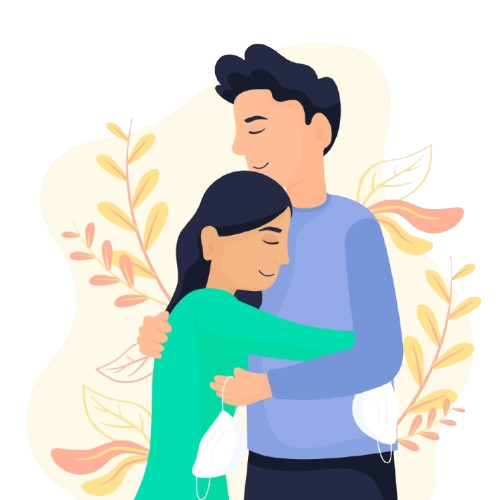
Take the first step towards a healthier life! Call now to connect with our compassionate team and start your recovery journey today. Your path to healing awaits!
Our recovery specialists are available 24/7 to provide support, and all calls are confidential and free. Reach out anytime – we’re here to help!
Common Signs and Symptoms of a Substance Use Disorder
Signs of addiction can be subtle at first but become more obvious over time. Look for changes across different areas of life:
- Behavioral: Increased secrecy, neglecting responsibilities at work or school, anger when confronted about use.
- Physical: Bloodshot eyes, sudden weight changes, poor hygiene, or withdrawal symptoms like tremors or sweating.
- Psychological: Mood swings, irritability, anxiety, paranoia, or loss of interest in hobbies.
- Social: Strained family relationships, changing friend groups, financial trouble, and isolation.
If you recognize these signs in yourself or a loved one, it’s time to seek help for drug addiction. The Tennessee Department of Behavioral Health offers a comprehensive list of warning signs.
Understanding Addiction as a Chronic, Treatable Disease
Addiction is a chronic disease, much like diabetes or heart disease. It requires ongoing management, not a one-time fix. Relapse can happen, but it’s a sign to adjust the treatment plan, not a failure. Recovery is a lifelong process of building coping skills and using support systems. Both genetics and environmental factors like trauma or stress contribute to addiction. With the right treatment, people can and do live full, healthy lives.
How to Recognize and Respond to a Drug Overdose
A drug overdose is a medical emergency. Signs include slow or stopped breathing, unresponsiveness, choking sounds, and blue lips or fingernails. If you suspect an overdose:
- Call 911 immediately. Give your location and describe the situation. Most states have Good Samaritan Laws to protect you from minor drug charges.
- Administer Naloxone if you have it. This medication can reverse an opioid overdose.
- Stay with the person until help arrives. If they are unconscious but breathing, roll them onto their side to prevent choking.
Do not try to make them vomit or put them in a cold shower. Fast action is critical. The CDC provides more information on overdose prevention.
Where to Find Immediate Help for Drug Addiction
When you need help for drug addiction in a crisis, you need it now. Taking the first step is brave, and support is available 24/7. Overcoming the stigma and shame associated with addiction is often the biggest hurdle. Addiction is a health condition, not a character flaw. The CDC notes that stigma prevents many from seeking help, but you are not alone—one in fourteen Americans has a substance use disorder.
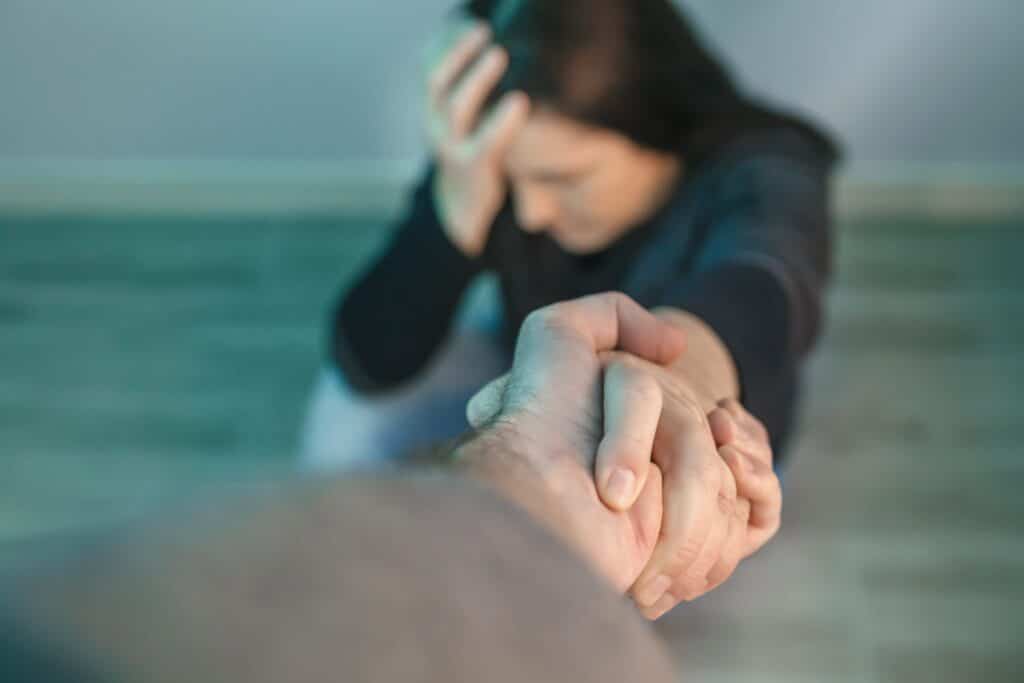
National Helplines and Emergency Services
Confidential, free help is just a phone call away, anytime, day or night.
- SAMHSA’s National Helpline (1-800-662-HELP): This 24/7 service in English and Spanish connects you with local treatment facilities, support groups, and community-based organizations.
- 988 Suicide & Crisis Lifeline: If you’re in emotional distress or having suicidal thoughts, call or text 988 for immediate, free, and confidential support.
- Addiction Helpline America: Our team offers free, personalized guidance to help you steer your options and find a suitable program from our nationwide network of treatment centers.
When you call a helpline, a compassionate professional will listen and guide you to the next steps, whether that’s finding a detox center or connecting with a local support group.
Using Online Tools to Find Qualified Treatment Facilities
If you’re not ready to call, online tools allow you to research options privately.
- FindTreatment.gov: This anonymous SAMHSA tool lets you search for treatment facilities by location, type of care, payment options, and specialized programs (e.g., for veterans or those with co-occurring disorders).
- Addiction Helpline America’s treatment locator: Our specialists can provide personalized assistance to help you sort through options and find the right fit.
When researching, look for accredited facilities offering evidence-based practices. Always call a facility to confirm services and ask questions. Our step-by-step guide to finding treatment can help.
The Critical Role of Naloxone in Opioid Overdoses
Naloxone (often sold as Narcan) is a life-saving medication that can rapidly reverse an opioid overdose by restoring normal breathing. It is easy to use, available in most states without a prescription, and safe to administer even if you’re unsure of the cause. If you or a loved one uses opioids, having Naloxone on hand is like having a fire extinguisher—you hope you never need it, but it can be the difference between life and death. Learn more about the life-saving science of Naloxone from the National Institute on Drug Abuse.
A Comprehensive Guide to Addiction Treatment Options
There is no single path to recovery; the best help for drug addiction is a personalized plan. Treatment begins with an assessment to understand your unique situation, including substance use history, mental health, and life circumstances. This helps create a plan that fits your specific needs.
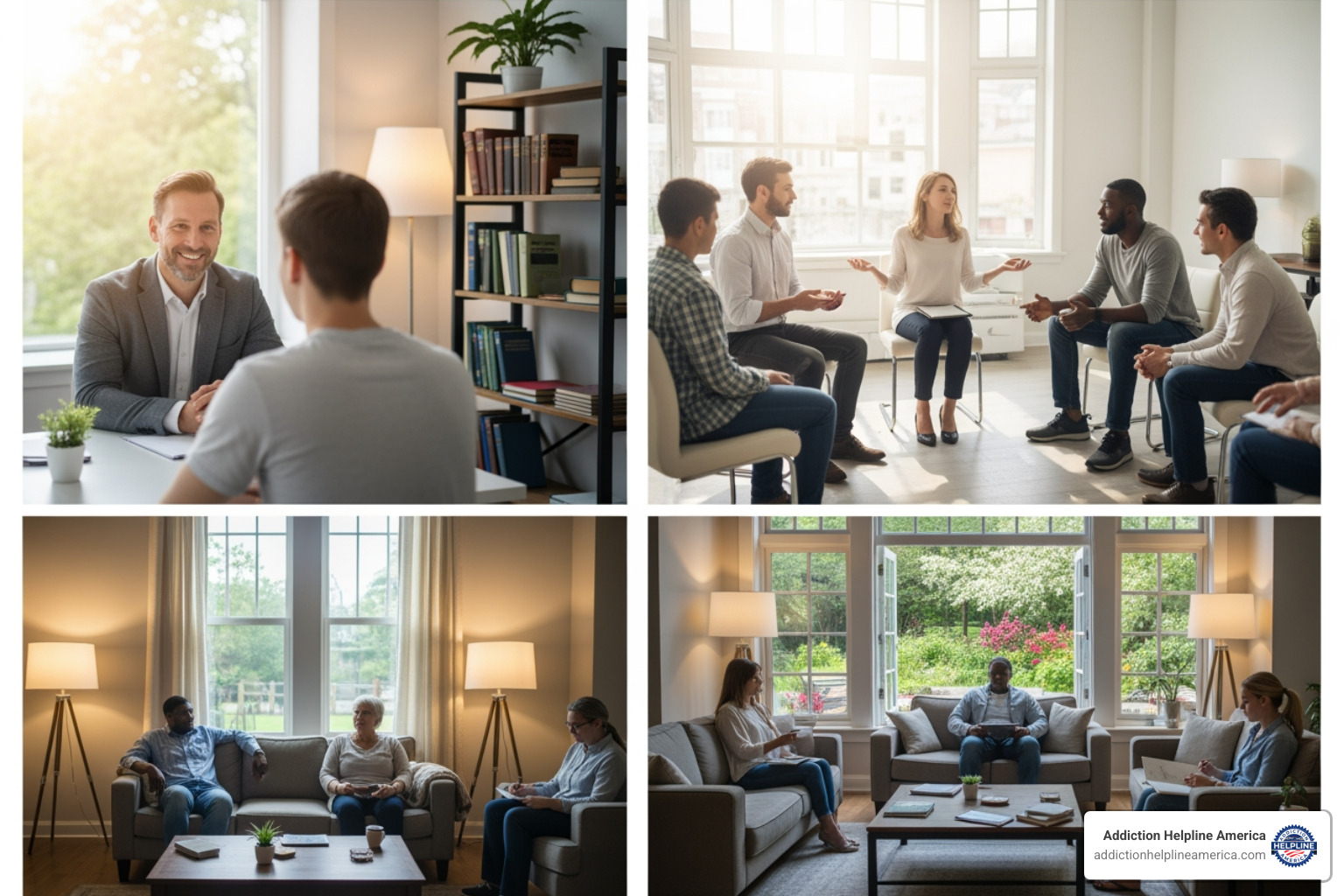
Call Now – Your Journey to Recovery Begins Today!

Take the first step towards a healthier life! Call now to connect with our compassionate team and start your recovery journey today. Your path to healing awaits!
Our recovery specialists are available 24/7 to provide support, and all calls are confidential and free. Reach out anytime – we’re here to help!
The Principles of Effective Addiction Treatment
According to the National Institute on Drug Abuse, effective treatment is based on several key principles. It recognizes addiction as a treatable brain disease and tailors care to the whole person, not just their drug use. Treatment should be readily available and last long enough to be effective (typically 90 days or more). A combination of counseling, medication, and support for co-occurring mental health conditions is often most successful. Medical detox is only the first step and must be followed by comprehensive therapy.
Levels of Care: From Detox to Outpatient Programs
Treatment is offered at different intensities to match your needs:
- Medical Detoxification: Medically supervised management of withdrawal symptoms to ensure safety and comfort.
- Inpatient/Residential Treatment: 24/7 care in a live-in facility, providing an immersive, trigger-free environment.
- Partial Hospitalization (PHP) & Intensive Outpatient (IOP): Structured day programs that allow you to live at home while receiving intensive therapy.
- Standard Outpatient Treatment: Weekly therapy sessions that fit into your regular life, ideal for milder issues or as a step-down from more intensive care.
Our guides on detox programs and types of treatment programs offer more detail.
How Treatment Medications Support Recovery
Medication-Assisted Treatment (MAT) is a highly effective, evidence-based approach, especially for opioid and alcohol use disorders. It is not “replacing one drug with another.” FDA-approved medications like Buprenorphine (for opioids) and Naltrexone (for alcohol) work by reducing cravings and withdrawal symptoms. This stabilizes brain chemistry, allowing you to focus on the psychological work of recovery in therapy. MAT is always provided under medical supervision and is most effective when combined with counseling. For more, visit SAMHSA’s medication-assisted treatment page.
The Role of Behavioral Therapies in Changing Habits
Therapy is the core of addiction treatment, teaching you how to live without substances. Common approaches include:
- Cognitive-Behavioral Therapy (CBT): Helps you identify and change negative thought patterns and behaviors related to drug use.
- Dialectical Behavior Therapy (DBT): Teaches skills for managing intense emotions, tolerating distress, and improving relationships.
- Motivational Interviewing: A collaborative approach that helps you find your own motivation to change.
- Family Therapy: Heals relationships and teaches family members how to support recovery effectively.
These therapies provide the tools to build a life where drugs are no longer needed.
Building a Life in Recovery: Support for Individuals and Families
Recovery is an ongoing journey, not a destination. It requires sustained effort and a strong, sober social network. Positive connections provide encouragement, accountability, and a sense of belonging. At Addiction Helpline America, we are committed to supporting you through every phase of this journey, guided by SAMHSA’s principles of recovery, which emphasize hope, peer support, and a person-driven, holistic approach.
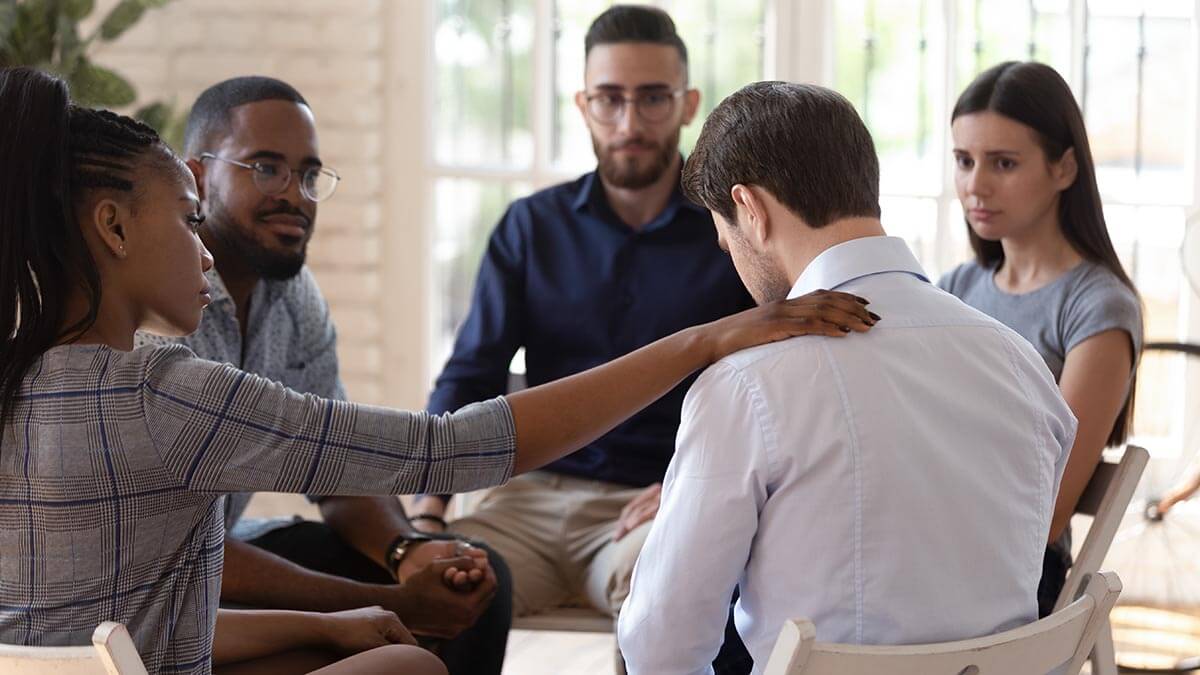
The Importance of Aftercare and Relapse Prevention
Completing a treatment program is the beginning, not the end. Aftercare is essential for lasting help for drug addiction. This involves creating a relapse prevention plan that identifies your triggers and outlines healthy coping skills, such as mindfulness or calling a sponsor. Sober living homes can provide a structured, supportive environment to bridge the gap between inpatient treatment and independent living. Recovery is also about finding new purpose through hobbies, volunteering, or career goals, building a life you don’t want to escape from. If a relapse occurs, it’s a sign to re-engage with support, not a failure.
Peer Support Groups and Recovery Communities
Peer support groups offer free, accessible help for drug addiction from people with shared experiences. They provide a judgment-free space to find hope and accountability.
- Twelve-Step Programs: Narcotics Anonymous (NA) and Alcoholics Anonymous (AA) use a structured, spiritual approach with sponsors for guidance.
- SMART Recovery: A secular, science-based alternative focused on self-empowerment and cognitive skills.
- Other Groups: Options like Celebrate Recovery (faith-based) and Refuge Recovery (Buddhist-inspired) cater to different beliefs.
Finding a meeting is easy with online locators, and both in-person and virtual options are widely available, making support accessible to everyone.
Resources and Self-Care for Families and Friends
Addiction impacts the entire family, causing fear, anger, and exhaustion. It’s crucial for family members to get support and avoid codependency—enabling behaviors that shield the person from the consequences of their actions. Learning to set healthy boundaries is an act of love. Support groups like Al-Anon and Nar-Anon are designed for families, providing a space to heal and learn. You can’t control your loved one’s addiction, but you can take care of yourself. SAMHSA offers additional resources for families.
Specialized Help for Drug Addiction in Teens and Young Adults
Adolescents face unique challenges, as their brains are still developing, making them more vulnerable to addiction. Signs of teen drug use can include sudden changes in friends, grades, or mood. Early intervention is critical. Treatment for teens must involve the family to heal relationships and build a supportive home environment. Specialized programs address their developmental needs and incorporate educational support. NIDA provides excellent resources for teens and their parents. Seeking help for drug addiction early gives your teen the best chance for a healthy future.
Where to Find Immediate Help for Drug Addiction
When a crisis hits, you need help for drug addiction right away. Reaching out is a brave first step. The fear of judgment, or stigma, is a major barrier to seeking care, as noted by the Centers for Disease Control and Prevention. But addiction is a health condition, not a character flaw. One in 14 Americans experiences a substance use disorder, and you deserve compassion and support.
National Helplines and Emergency Services
At any moment, trained professionals are ready to help. These services are free, confidential, and available 24/7.
- SAMHSA’s National Helpline at 1-800-662-HELP (4357): This 24/7 service provides referrals to local treatment centers, support groups, and community resources in English and Spanish.
- 988 Suicide & Crisis Lifeline: For immediate support during an emotional crisis or if you’re having thoughts of suicide, call or text 988.
- Addiction Helpline America: Our team offers free, personalized guidance, using our knowledge of treatment centers nationwide to match you with a program that fits your specific needs.
When you call, a compassionate person will ask a few questions to understand your situation and provide clear, actionable next steps.
Using Online Tools to Find Qualified Treatment Facilities
If you prefer to research on your own, online tools offer a private way to explore options.
- FindTreatment.gov: This SAMHSA tool allows you to confidentially search for facilities by location, type of care (outpatient, residential), payment options (insurance, sliding scale), and specialized programs.
- Addiction Helpline America’s treatment locator: Our specialists can help you steer search results and connect you with a facility that matches your needs.
As you search, look for accredited facilities. Always call to confirm services and ask questions. For more tips, see our step-by-step guide to finding treatment.
The Critical Role of Naloxone in Opioid Overdoses
Naloxone (brand name Narcan) is a medication that saves lives by rapidly reversing an opioid overdose. It works by blocking opioid receptors in the brain, restoring normal breathing within minutes. It’s safe, easy to use (typically a nasal spray), and available in most states without a prescription. We strongly encourage anyone who uses opioids, or their family and friends, to carry Naloxone. After administering Naloxone, always call 911, as its effects are temporary and further medical care is needed. The National Institute on Drug Abuse explains the life-saving science of Naloxone.
A Comprehensive Guide to Addiction Treatment Options
After finding immediate support, the next step is understanding your options for help for drug addiction. There is no one-size-fits-all solution; effective treatment is personalized. The journey begins with a professional assessment to create a plan custom to your specific substance use, mental health, and life situation.
The Principles of Effective Addiction Treatment
Decades of research by the National Institute on Drug Abuse (NIDA) show what makes treatment work. Quality programs recognize addiction as a treatable brain disease and address the whole person, not just the drug use. Treatment should be readily available, last long enough to be effective (often 90+ days), and integrate counseling, medication, and support for co-occurring mental health issues. Detox is only the first stage and must be followed by comprehensive therapy. You can review NIDA’s principles of effective treatment to help identify quality care.
Levels of Care: From Detox to Outpatient Programs
Treatment exists on a spectrum of intensity, allowing you to step down to less intensive levels as you progress.
- Medical Detoxification: Medically supervised withdrawal management to ensure safety. Learn more about detox programs.
- Inpatient/Residential Treatment: 24/7 care in a therapeutic facility, ideal for severe addiction. See our guides on long-term addiction rehab centers.
- PHP and IOP: Intensive day treatment that allows you to live at home.
- Standard Outpatient Treatment: Weekly therapy sessions for ongoing support.
Our guide to types of treatment programs explores these options further.
How Treatment Medications Support Recovery
Medication-Assisted Treatment (MAT) combines FDA-approved medications with therapy to treat substance use disorders. It is a proven, effective approach. Medications work by normalizing brain chemistry, reducing cravings, and managing withdrawal symptoms. This allows you to engage more fully in therapy. Examples include buprenorphine for opioid use disorder and naltrexone for alcohol use disorder. MAT is prescribed by a doctor and is a key tool in providing comprehensive help for drug addiction. For more, see information on treatment medications from SAMHSA.
The Role of Behavioral Therapies in Changing Habits
Behavioral therapies are the foundation of recovery, providing the psychological tools for lasting change. These therapies help you understand your triggers and develop healthy coping mechanisms.
- Cognitive-Behavioral Therapy (CBT): Teaches you to identify and change harmful thought patterns and behaviors.
- Dialectical Behavior Therapy (DBT): Builds skills in mindfulness, distress tolerance, and emotional regulation.
- Motivational Interviewing (MI): Helps you find and strengthen your internal motivation for recovery.
- Family Therapy: Involves loved ones to improve communication and build a supportive home environment.
By engaging in these therapies, you learn to build a fulfilling life without relying on substances.
Call Now – Your Journey to Recovery Begins Today!

Take the first step towards a healthier life! Call now to connect with our compassionate team and start your recovery journey today. Your path to healing awaits!
Our recovery specialists are available 24/7 to provide support, and all calls are confidential and free. Reach out anytime – we’re here to help!
Building a Life in Recovery: Support for Individuals and Families
Recovery is an ongoing journey of growth and self-findy. A strong, sober social network is vital, providing encouragement, accountability, and a sense of belonging. At Addiction Helpline America, we support you at every stage, guided by SAMHSA’s principles of recovery, which highlight hope, peer support, and a person-driven approach.
The Importance of Aftercare and Relapse Prevention
Completing a treatment program is just the beginning. Aftercare and relapse prevention are crucial for long-term sobriety. This means developing a written relapse prevention plan that identifies your triggers and outlines healthy coping skills. Sober living homes can offer a structured, supportive environment for transitioning back to daily life. Recovery is also about finding new purpose and hobbies to build a life you don’t want to escape from. If a relapse happens, view it as a signal to adjust your plan and re-engage with support, not as a failure.
Peer Support Groups and Recovery Communities
Peer support groups offer invaluable help for drug addiction by connecting you with people who have similar experiences. They are typically free and widely available.
- 12-Step Programs (NA/AA): Offer a structured, spiritual path with peer sponsorship.
- SMART Recovery: A secular, science-based program focused on self-empowerment.
- Other Options: Groups like Celebrate Recovery (faith-based) and Women for Sobriety cater to specific needs.
A sponsor or mentor can provide crucial guidance and accountability. Meetings are easy to find online, with both in-person and virtual options available.
Resources and Self-Care for Families and Friends
Addiction affects the entire family, causing pain, fear, and exhaustion. Family members need their own support. It’s vital to avoid codependent behaviors (like making excuses or providing money for drugs) and to set healthy boundaries. Support groups like Al-Anon and Nar-Anon help families understand they didn’t cause the addiction and can’t control it, but they can take care of themselves. You can find a local meeting on the Al-Anon or Nar-Anon websites. SAMHSA also provides helpful resources for families.
Specialized Help for Drug Addiction in Teens and Young Adults
Adolescents face unique challenges due to their developing brains, making them more vulnerable to addiction. Signs of teen drug use include sudden changes in friends, grades, or behavior. Early intervention is critical. Treatment for teens should always involve the family to improve communication and create a supportive home environment. Specialized programs address the developmental needs of young people. NIDA offers excellent resources for teens and their parents. Seeking help for drug addiction early gives your child the best chance at a healthy future.
Our helpline is 100%
free & confidential
If you or someone you care about is struggling with drug or alcohol addiction, we can help you explore your recovery options. Don’t face this challenge alone—seek support from us.
Programs
Resources
Will my insurance
cover addiction
treatment?
We're ready to help
Find the best
drug or alcohol treatment
center
Are you or a loved one struggling with addiction? Call today to speak to a treatment expert.




